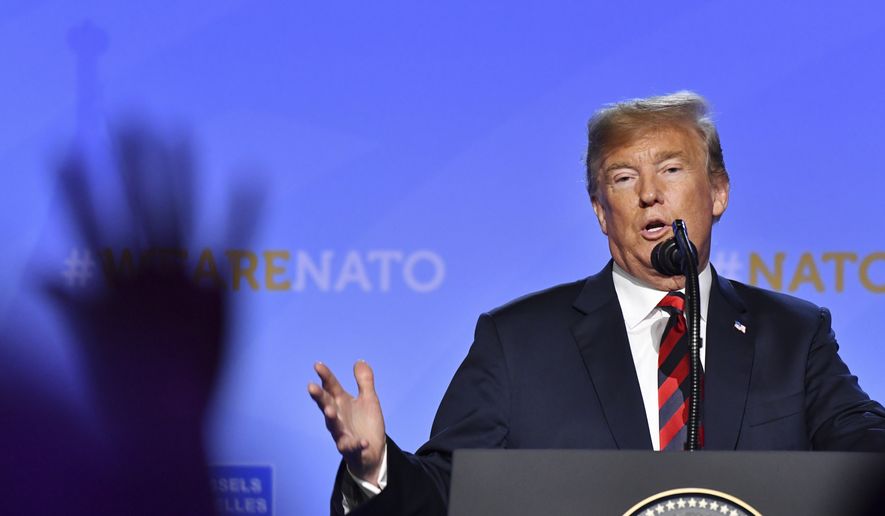OPINION:
The national security talking head and op-ed circuit these days is full of “clucking” about how we can recover lost ground from the Russians and Chinese in the post-Cold War competition of world powers. Not surprisingly perhaps, there is little discussion of how we got ourselves into this mess — this because many of the op-ed authors and talking heads were complicit in our great power demise.
Our reaction to this kind of 20-20 hind-sighting is: “No kidding”? After all, we gave the Russians and Chinese 20-plus years to beat on us, mostly while we were diverted in Iraq, spending — depending on how you count — as much as $10 trillion, which was mostly borrowed.
Thus, where we are today should not surprise us and is a combination of: 1) what the Russians and Chinese seem always to do, no matter what they agree to or sign, and 2) our colossal naivete, whether it’s walking from the 1972 Anti-Ballistic Missile (ABM) Treaty and then not building the most cost-effective ballistic missile defense (BMD) systems, allowing our nuclear weapons infrastructure to atrophy, or following Saddam down a money hole in Iraq.
Do “we” realize “we” are to blame for the effects of our own incompetence? Doubtful, because in Washington few if any take responsibility for anything that fails — and our major recent national security policies have mostly failed. Every administration since Ronald Reagan is to blame for it, while Congress has been complicit. However, and to its credit, the Trump administration is trying hard to turn these dangerous trends around.
Here are examples of how — and why — we are where we are today:
The George H.W. Bush administration (’89-’93) ended our nuclear testing and morphed the Defense Nuclear Agency (DNA), which had for decades developed and maintained the nation’s expertise in nuclear weapons effects, into the Defense Threat Reduction Agency (DTRA), an agency focused on conventional weapons effects, other “weapons of mass destruction” (WMD), and monitoring arms control agreements.
The loss of our nuclear effects expertise, however, undermined key efforts to counter important threats. We have come to depend on theoretical modeling and simulation methods not validated by high fidelity testing — contrary to the scientific method that demands persistent iteration between theory and experiment.
This deficiency is perhaps most significant when it comes to understanding the design and how best to counter the effects of advanced nuclear weapons — a Russian focus for many years. And Russia has passed this kind of information to potential adversaries, e.g., how to build super electromagnetic pulse (EMP) weapons was passed to North Korea.
On the positive side, Bush 41 continued President Reagan’s Strategic Defense Initiative (SDI): He specifically approved a GPALS program to provide “Global Protection Against Limited Strikes.” It included new initiatives to defend our overseas troops, friends and allies that led to today’s operating BMD systems: Our ground-based Homeland Defense; the Navy’s Aegis BMD system; the Theater High Altitude Area Defense (THAAD); and the much-improved Patriot, hero of the first Gulf War.
However, missing from this list is “Brilliant Pebbles,” the first SDI concept approved by the Pentagon’s Acquisition Executives in 1990 to enter a Demonstration and Validation (DemVal) program. In our opinion, this concept was, by far, the most important product of the Strategic Defense Initiative (SDI) era (1983-93).
That cancellation at the beginning of the Clinton administration (’93-’01) was at odds with the best of the Reagan-Bush-41 SDI agenda that had much to do with ending the Cold War. Moreover, it ignored the important January 1992 proposal by Russia’s President Yeltsin for our SDI program to take advantage of Russian technology and that we together build a “joint global defense to protect the world community.”
Yeltsin basically said “yes” to President Reagan’s agenda we had advocated in the Defense and Space talks in Geneva beginning in 1985, entirely consistent with President Bush’s GPALS agenda.
Moreover, he proposed deep reductions in offensive strategic nuclear arms — reversing the prior Soviet/Russian positions that defenses would make offensive reductions impossible.
But rather than continuing the Bush-41 negotiations, the Clinton administration returned to Cold War rhetoric, claiming defenses were destabilizing and would make offensive reductions impossible — a mistake with most unhelpful consequences in dealing with Russia today.
We hoped that the George W. Bush administration (’01-’08) would “reset” these conditions to those of the Bush 41 administration, especially after Bush 43 withdrew from the ABM Treaty, removing the constraints that had previously blocked the development, testing and deployment of space-based defenses. But that didn’t happen and now we are playing catch-up in a hypersonic weapons competition with Russia and China, among other things.
Moreover, we became pre-occupied with 9/11 and our responses thereto: Invading Iraq based on what proved to be very bad intelligence, yet remaining for many years thereafter with a democracy mission — which has proven to be both costly and ineffective.
The Obama administration (’08-’16) returned us to the naive national security policies of the Clinton administration — and turned a bad situation in Iraq into a worse one by announcing a firm departure date, giving rise to ISIS, and then taking down Moammar Gadhafi’s regime in Libya with no plan thereafter — pushing the Middle East into the chaos where it remains.
President Trump has steered the nation back to a more rational and threat responsive security policy with the renewal of our aging nuclear infrastructures and a refocus on advanced technologies to face today’s challenges, including those that were the focus of Mr. Reagan’s SDI vision — especially Brilliant Pebbles.
• Daniel J. Gallington and Henry F. Cooper served in a series of senior national security related positions, including the Defense and Space Talks with the Soviet Union.




Please read our comment policy before commenting.